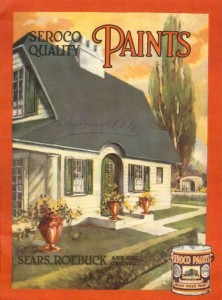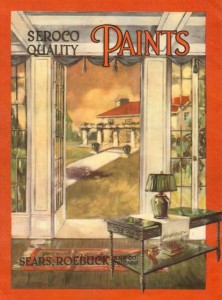In our role as “Custodian” of the painting industry’s past, Painting in Partnership from the Chicago area, has assembled a large collection of paint memorabilia, which we plan on displaying in a “virtual” paint museum in the not too distant future. I would like to tell you about our most recent paint memorabilia acquisition.
An antique book dealer contacted me recently. He had made a rare find: a 40-page, 1916 edition of a Seroco Paints catalog. It was the equivalent of a paint store in print, with a few hundred products, including color charts, tools, ladders and a broad array of paints, clear finishes and sundries.
How did the Seroco name came about? It was derived from combining the first two letters of the name of a famous retailer: Sears, Roebuck and Co. from Chicago. The company offered a complete line of paints from house paints, barn paints, buggy varnishes etc.
Why is it significant that Sears was involved in the paint business? Because of its vast distribution network
and its huge catalog business, Sears had considerable influence over the color choices of Americans for their homes, inside and out. Another part of the reason is that, from 1908 to 1940, Sears sold over 70,000 pre-fabricated, ready-to-assemble homes. During the Great Depression, because the company was also involved in mortgaging those houses, Sears found itself with a mountain of defaults. In a landmark decision, Sears decided to write off $11 million of those loans, thereby creating immense goodwill among the American public.
For those reasons, Seroco Paints hold a special place in the history of colors used on American homes in the first half of the twentieth century, which are now referred to as “”period” houses in many cases.









 Follow
Follow
